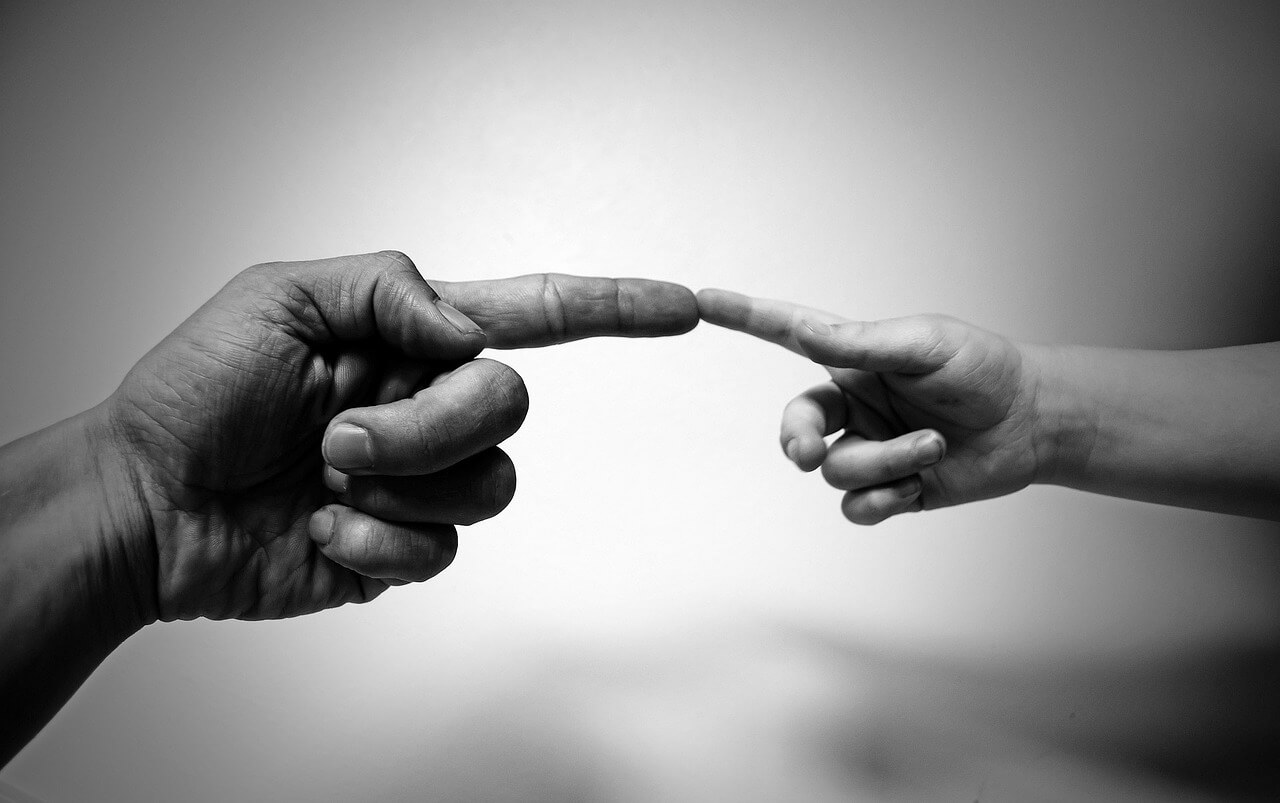Some people think that racism only happens when you act mean to someone. But there are other ways, too. While the concept is the same, racism definition for kids is a little complicated. Your children should know its different faces.
So, they know and learn how to be compassionate with other people, despite the differences in race, color, gender, or culture. Let’s discuss this old-age conflict between people, and how you can explain it to your kids.
Age-Appropriate Definition of Racism
This is the belief that some people are more important than others because of their race. It means not letting someone enroll in schools or use specific privileges at school because of their race, color, or language.
A racist is when someone does not like a person because of their skin color. For example, if you choose not to be friends with a student in school because they are not white then that is racist behavior, too.
Another example of a racist action is segregation. This happens when a group of kids at school call out the name of a black kid and say mean things about that kid’s family. It’s unfair treatment of other children because they aren’t of the same color or language as your kid.
But, how did this discriminatory act start?
Civil Rights Movement and Its History
Racism in the past is disconcerting. It has been a problem for more than a century even before war broke out in the US. Groups of people become slaves, especially of American African descent. For years, many advocates fought for equal rights and power.
After years of fighting for equality, the US government approved the Civil Rights Act in 1964. In this law, racist behavior is illegal. You can’t discriminate against people because of their color, sex, religion, race, and other types of classes that could be derogatory.
So, it’s important that your child recognizes and knows this offensive act.
When to Talk to Your Child About Racism
This is a sensitive subject and can be very difficult to explain to children. You will need to decide when or if you want to broach this topic with your child at all. Here’s a basic lesson plan to help you broach the subject without raising fears.
Early Childhood
Toddlers and preschoolers are open to new ideas and experiences. Even babies are already aware of this act. They don’t just recognize it yet.
Your children also form opinions based on what they see, hear and feel. So, this is the perfect time to start teaching them about this behavior for their sake and for their future.
You do not have to talk about racism every day. Plan activities that reinforce this concept even without really thinking about it.
You may have some books in your home that contain lessons on this behavior. If you have these books, read them with your children. Using books will be a good way for children to get used to this offensive act and learn what it is.
What you can do next is watch your child’s reactions when a racist behavior appears on TV. They may already have their own ideas about it because of the things they have seen and heard at home.
You should encourage them to express these ideas and then give more information if needed. It would also be a good time for you to share your own experiences. But make sure they understand that racism comes from other people who mean no harm.
Your children can learn or unlearn this behavior with the proper guidance. The key is to prepare your child, instead of letting him or her experience it without any preparation.
School Age
School-aged kids can better understand this topic because they are already learning about it in school. Because this action is prominent during this time, you can be more specific with your children about this subject.
Ask questions to see if they understand the concept correctly. You could ask questions such as:
- What do you think racism is?
- How would a racist feel?
- Have you heard anyone being racist before?
- In what way was a person being racist?
- Have they been exposed to racial discrimination?
You may not like the answers at first. But as long as the child understands racism after talking to you, that is fine. You may find out there are differences in their reactions. These reactions could be the result of how the media portrayed different races.
Immediately, correct your child’s understanding of the answer is not the definition of racism. Use role-playing so that your children will learn how to react when this discrimination happens.
As children reach their teenage years, it is important that they set an example for others who may be less than tolerant of racism. The best way for them to do this is with people other than their family members.
Make sure you teach racism early enough. So, attitudes towards racism will change once racist behaviors become evident in public or at school.
By teaching racism at the right time, you can help your child develop into someone who does not tolerate racism regardless of what country he lives in. Remember: racism is learned behavior.
Teenage Years
The reason why racism is learned is that other people have portrayed racism as a good thing to do. Knowing this will help you understand racism better and it will also help children learn about racism at the right time.
It may be harder for parents to talk about racism with their children if they are from minority groups. But you should never avoid talking about racism just because you feel your child should not be discriminated against by anyone else!
As a parent, you can make sure that other people around your child will respect them regardless of their racial background or beliefs. Talk to your kids before taking them to places where they might experience racism.
This way, they’ll already know racism is a bad thing to do and your warning will remind them not to fall into this trap! When racism becomes prominent during the early years, racism can be talked about as an example of something negative in society.
You should teach your children about racism before they are exposed to it. The earlier you have a conversation about racism with your children, the less chance your children will become racist themselves.
How to Explain Racism to Your Child
Racism and its effects are deeply rooted in society and culture. Children are exposed to racism almost from birth. They absorb a great deal from their parents about race and racism between the ages of 2 and 5.
This age is the period when kids develop their understanding of right and wrong. So, it’s vital they get appropriate information on this sensitive subject from you, your family members, or responsible adults.
Children are naturally curious about racism. They ask questions like, “Why do some people treat other people differently?” and “Why do white people only hang out with white kids and black kids only hang out with black kids?”
It’s important to give your child a basic definition of racism so he can be more aware of racism in his community as well as racism at school. Most of all, choose your word wisely when explaining. Here’s how:
Tell Your Kids That Racism Exists
Start off by showing that racism exists. Use examples from the media such as TV, books or magazines. Point out times when racism is addressed (even if it’s not directly stated).
For example, a lack of diversity in cartoons, TV shows, YouTube or ads might represent racism. Pay attention, that Youtube is causing stress on kids as well. Show your child pictures or photos from history books of racism in action.
Even if racism is not mentioned, point out the obvious racism by showing how people of color are usually portrayed as slaves or servants.
Explain Why Does Racism Exist
Next, discuss racism and why it exists. Racism is a system that privileges white people while oppressing people of color through institutions like slavery that started before the United States of America was even founded.
Explain that racism has been going on since Europeans first came to this country and killed most Native Americans, enslaved Africans and brought them to work as unpaid labor. This history makes up what we now call systemic racism.
Teach the Racism cycle
Teach your child the racism cycle. Racism has gone on forever — it’s a cycle that was created and passed down from generation to generation. The racism cycle looks like this:
- People of color are discriminated against via racism (white racism).
- This leads to anger or resentment among people of color toward white people.
- White people feel threatened, so they discriminate against more people of color in an attempt to protect themselves. This is how racism continues over time, as long as we don’t stop the cycle.
Mention Other Related Words
Explain prejudice vs. racism to your child. Prejudice is when you say mean things about a person without knowing them personally. Your child must understand that these behaviors are not tolerable.
Show a Racist’s Actions
Show your child racism in action around him. Discuss racism when you see it. The racism cycle could happen.
If people of color in the community feel angry toward white people based on past racism, then they may verbally attack white boys among themselves. This leads to the feelings of being threatened by people of color, so they disrespect women.
It will also help educate your child about what racism looks like if he is attacked in this way himself one day.
Racism Exists Worldwide
Explain that this behavior exists in all parts of the world, so it’s not just happening to people of color in America.
Also, make sure your child knows that sometimes people think they are being nice when they say racist things. For instance, a teacher will tell the class to color in pictures of only one race.
Or someone might think that it’s okay to tell Asian kids “slanty eyes” and African American children to get back on the “plantation.” Explain racism is hurtful no matter what because it hurts everyone’s feelings.
Use History or Current Events
Help your child understand racism via history. If you’re not sure why racism happened in history, look up information online so you can help explain racism more easily. Give examples from history or current events.
Become your kid’s number one source of information about racism. Through this, you can filter out wrong notions. This means you also have to educate yourself so that you can teach and explain the definition of racism to your kids.
Discuss the Impacts of this Discriminatory Action
Explain how racism impacts people of all colors today. Show your kids how people of color experience racial discrimination due to their skin tone or other physical features.
Racism can occur when police officers arrest or shoot a person because he or she happens to be of a certain skin tone or race.
Talk About the “Invisible” Type
Teach your kids that racism isn’t about how a person looks on the outside, but rather what racism is inside. Explain that racism shows itself in words, deeds, and behaviors.
Similarly, racism also shows itself when white people tell other white people not to care about racism because it doesn’t affect them. It’s time to ask ourselves.
How many racist words and actions do you need to see before racism becomes my issue? Clearly, this discrimination is a problem for everyone, regardless of skin color.
Tips on Raising a Compassionate Child
- Be a role model. Apply what you teach and your kid will imitate you.
- Encourage them to speak up when they witness racism.
- Teach empathy to other people regardless of their color and race.
- Repeat your explanation as often as you deem fit.
- Make sure to observe your kid’s behavior.
Conclusion
Whether you’re talking about your own experiences or giving examples, racism for kids is different and you need to talk about racism to your kids.
You don’t have to go into too much detail. But it’s important they know it isn’t limited to certain countries. That this issue is still a big concern in the Western world today.
You also need to teach your children how racism can affect their lives because sometimes racism is taken out of context. People misunderstand, so we want our children to understand what this means exactly and why it’s wrong.
A safe and secure environment for you child? We are here. Clever Bee Academy offers various programs such as toddler and pre-school programs, and before and afterschool care








